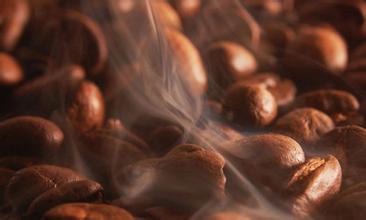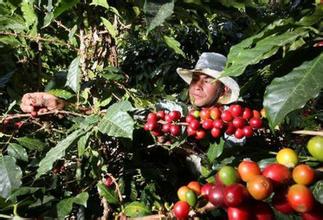Introduction to the flavor and taste characteristics and roasting degree of Asian coffee beans in Port-au-Prince, Haiti

Flavor and taste characteristics: rich flavor, mild taste.
Haiti, located in the western part of Hispaniola Island in the Lobi Sea, covers an area of about 27800 square kilometers. "Haiti" means "mountainous country" in the indigenous language. This mountainous country is also the most disaster-prone region on earth, it has been in the midst of war and poverty, and it is one of the most material-poor countries in the world. Even so, it can't stop this country from having the gift of nature. The biggest export of Haiti, which occupies 2 to 3 of the western island of Hispaniola, is coffee.
In 1725, Haiti officially began to grow coffee in the north, and now produces and exports about 600000 bags of coffee a year. Unfortunately, even in the final selection stage, Haiti does not distinguish between the quality of coffee beans on each farm. Coffee beans are mixed with the good and the bad. General Haitian coffee, mainly exported to European countries, led by France, is used to make blended coffee.
However, there is another part of the coffee, which is carefully planted in the high mountains and then refined. Most of these coffees are called "SHG Coffee" (meaning coffee grown above 1600 meters above sea level), and some are called "Port-au-Prince Coffee" and "Blue Haitian Coffee". These coffees are famous and expensive.
Most of the coffee produced in Haiti is grown in a purely natural state, which is not intentional but the result of material shortages because coffee farmers are too poor to buy fungicides, insecticides and fertilizers. On the contrary, this makes the coffee produced in Haiti the most natural and pollution-free. Haitian coffee is full-grained, rich in flavor, medium to low acidity and mild in taste. In Japan, Haitian coffee is often mixed with Jamaican Blue Mountain Coffee, which makes Blue Mountain Coffee more full-bodied and is called Blue Mountain's good companion.
Source: Dangdang
Important Notice :
前街咖啡 FrontStreet Coffee has moved to new addredd:
FrontStreet Coffee Address: 315,Donghua East Road,GuangZhou
Tel:020 38364473
- Prev

Introduction to the flavor and taste characteristics and roasting degree of American coffee beans in Jamaica.
Flavor and taste characteristics: full-bodied, balanced, with fruit and sour taste. Jamaican Blue Mountain Coffee has been loved by coffee connoisseurs around the world for nearly two centuries. It is considered to be the king's coffee and the best of the coffee. Although the production of Jamaican coffee accounts for only a negligible proportion of world coffee production, it cannot stop Jamaican Blue Mountain Coffee.
- Next

Introduction of flavor and taste characteristics of Asian coffee beans Santo Domingo coffee beans in Dominica
Flavor and taste characteristics: fresh and elegant, full particles, excellent acidity, pleasant aroma. The Dominican Republic is located in the east of the island of Haiti in the West Indies, bordering the Republic of Haiti to the west, the Atlantic Ocean to the north and the Caribbean Sea to the south. With an area of about 49000 square kilometers and a population of 7.1 million, the Dominican Republic and the Republic of Haiti coexist on an island bordering Haiti. Like its neighbors.
Related
- Guji coffee producing area of Guji, Ethiopia: Humbela, Shakiso, Wulaga
- What is the most expensive variety of Qiloso in BOP multi-variety group?
- How to store the coffee beans bought home?
- Why are Yemeni coffee beans so rare now?
- Ethiopian Sidamo all Red Fruit Sun Sun Santa Vini Coffee beans
- SOE is mostly sour? What does it mean? Is it a single bean? what's the difference between it and Italian blending?
- Is Italian coffee beans suitable for making hand-brewed coffee?
- How to choose coffee beans when making cold coffee? What kind of coffee beans are suitable for making cold coffee?
- Just entered the pit to make coffee, what kind of coffee beans should be chosen?
- Can only Japan buy real Blue Mountain Coffee? What are authentic Jamaican Blue Mountain coffee beans?

